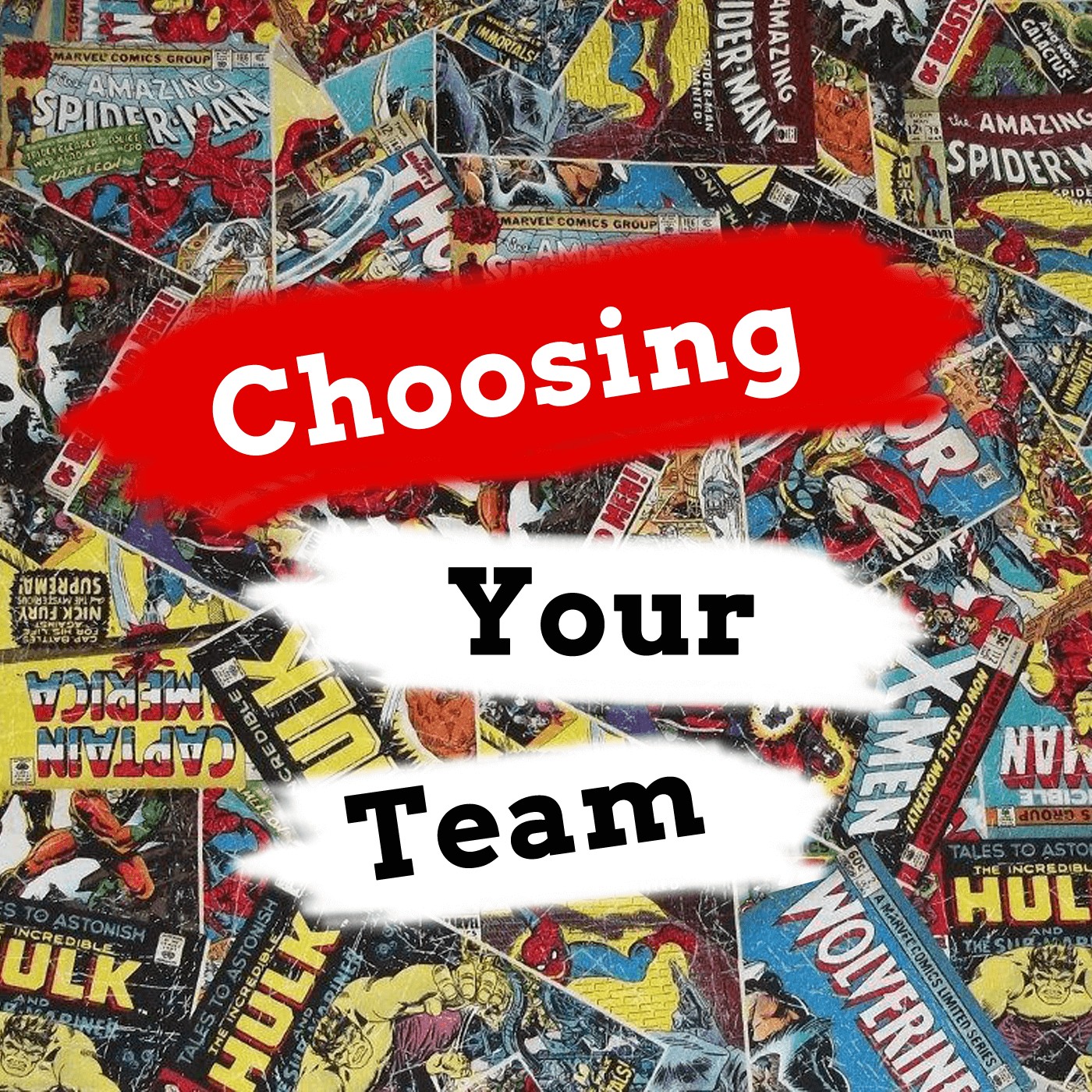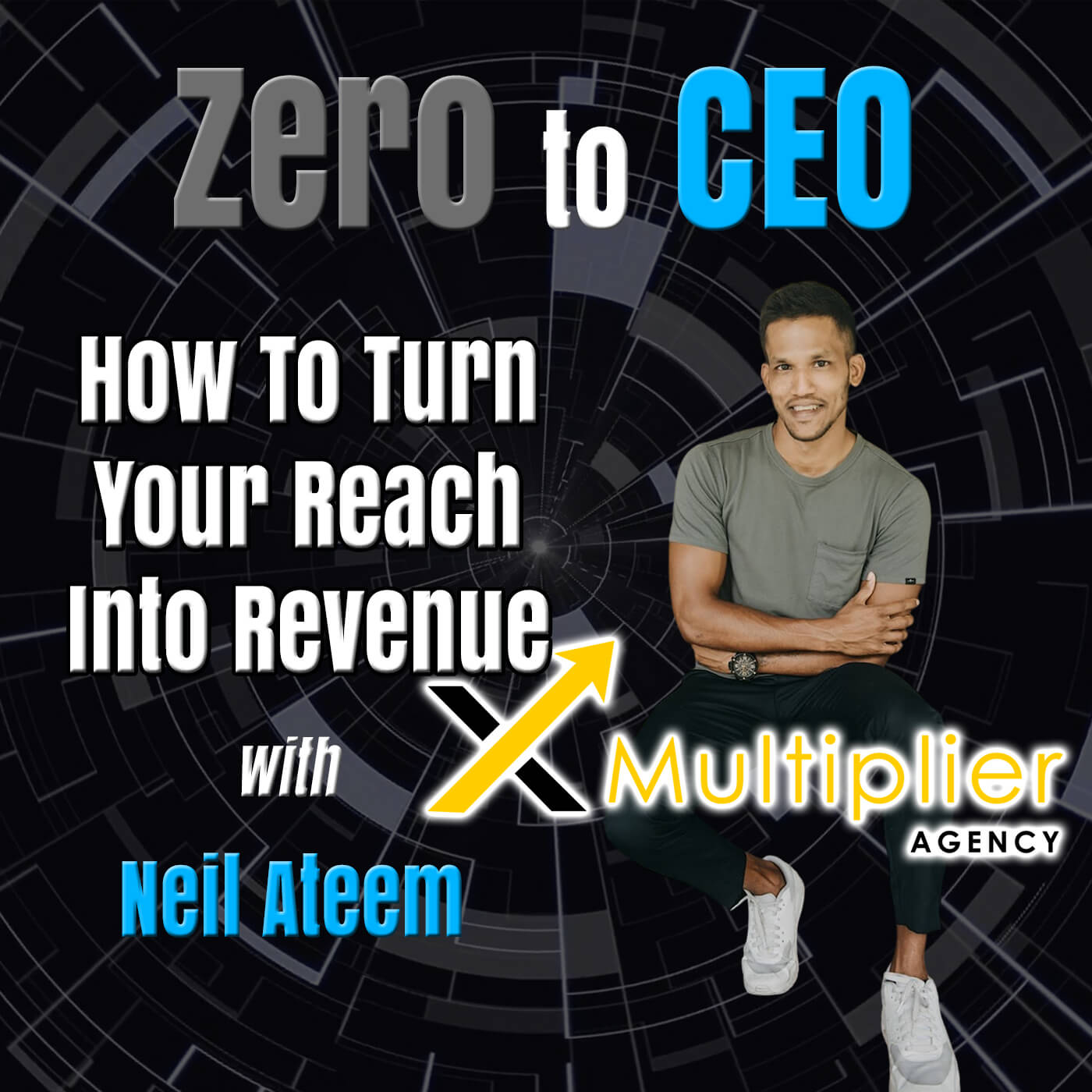How to choose a team for your startup or business


Choosing a cofounder for your startup, or hiring the right interns or employees for your business is always challenging. In this episode I give you some ideas on how you can make this a bit easier along with some tricks you can implement.
If you enjoyed this episode please subscribe and share this podcast, and if you’d like to further support this small business, feel free to donate via PayPal. Your support is appreciated!
Feel free to watch the video here:
Here’s the transcript from this podcast episode, please excuse any typos!
In today’s episode I’m going to discuss team building, whether it’s choosing a co-founder or hiring employees for your company or your business. And there’s a lot of different roles, usually in a company or a startup. The most common are the CEO or the chief executive officer, the CTO, Chief Technical Officer, cmo Chief Marketing Officer which is also known as the VP of marketing in some companies, there’s also the CFO, who’s the chief financial officer they deal with all the finances and the numbers, and there’s a role that I typically like to take in startups called the CEO, which is the chief operations officer. And what each of these roles do and how they work together in a startup or business are very important without all of them, you really can’t run a business properly, and sure in the beginning, when you first start a company you have to wear a lot of hats, so you know I like to. Usually, explain a company’s different roles like the Avengers, or the Justice League, you know, each superhero has a specific skill set, or powers, and they work really well together as a team.
That’s kind of how a startup works. You know, if you’re really good at marketing, but you’re not that good at programming. Well that’s why you would need a CTO to do the programming and a CMO to do the marketing. Same goes for the CEO, the CEO, the CEO is a leader, someone who knows how to raise money someone who knows how to have a vision and lay it out in presentations, somebody who knows how to explain everything and also knows a little bit about each topic, whether it’s marketing or programming or finances, the CEO typically has a really well rounded knowledge base of not only the industry that the company is in, but also on how to get it out there. So it depends on what kind of company you’re starting also if it’s a small business if it’s a brick and mortar company if it’s like a you know you’re selling a product, you might not need a lot of co founders or a lot of people in your team, you could maybe do it all by yourself, especially if you’re selling, say a T shirts online you have a T shirt business and you do it by yourself. But it’s always good to have a partner, if you’re trying to scale a business because then you can get twice as much of the work done in half the time depending on whether or not the person that you choose has a good skill set and if they’re very good at what they do.
Through the years, I’ve worked with a lot of startups and a lot of businesses and a lot of companies. And what I found happening is, I ended up doing most of the work. So the people I chose to work with, didn’t really have any good skill sets, where they didn’t have a lot of good skills as they might have had one and it just wasn’t good enough to, to kind of contribute to what I was able to offer you know what I was able to bring to the table. So I ended up doing a lot of the marketing work and a lot of the development work and a lot of the CEO work doing a lot of the you know the the negotiations with investors or, you know, doing a lot of pitches in public at competitions and whatnot. So a lot of the people were kind of sitting on the sidelines and I realized like oh why am I working with all these people that are not really pulling their weight. So you really have to choose people wisely.
One of the things that I always tell people it’s in my book and in my course online is before you choose co-founders, you should get as far as you can in your business without people. So as much work as you can possibly do by yourself, do it first before you bring people on. That way, when they come on. You’re valuable. You’ve shown that you can create a lot that you can do a lot of work, and that you don’t really need them, but that you want them to join you to help you propel your business to the next level. There’s a handful of strategies and tactics that I’ve used over the years to choose employees interns, co founders, employees, and one of the first things when it comes to a technology company, where you can start to find tech people whether it’s programmers, or people to help you figure out UI and UX or user interface user experience is to pick a very hard part of your platform let’s, so let’s say you’re building a ride sharing business kind of like Uber, okay but you’re doing it for bicycles.
Alright, so you want to be a ride sharing for bicycles in your neighborhood. What’s the most difficult part of the platform? Is it the matchmaking process, finding people that are close to the bicycles that are more prone to rent them. If that’s the most difficult piece, then what you do is you put out some feelers into the community that you know on LinkedIn or Facebook or Twitter or any other platform that you use where you find programmers and you say, I have this part in my platform that I need help with, and I’m willing to hire someone either as a co founder CTO, or as a lead developer. If you can build this piece. So basically you’re asking someone to build the hardest part of your platform is a test. If, say, five people approach you and say I can do it, then you hire them. Of course it’s all conditional on whether or not they can do this.
And they can’t do it. Then why would you hire them, then you may find the one developer who knocks it out in a week and you know they’re smart you know they’re good programmer, you offer them the position because they were able to build the hardest part of your platform, and you know that they can deliver on T shirt iterations and feature code. So that’s one trick I’ve used in the past and it’s worked very well many many times, this goes hand in hand with another trick is not really a trick but it’s pretty common knowledge is hosting a hackathon. If you have access to your local universities, or any local organizations that have auditoriums, you can host a hackathon, where students come for 24 hours and they have to build that difficult part. Top prizes you know 500 bucks or 1000 bucks or whatever it is.
Either way, you’re going to be paying a lot less money for the code because they’re getting the prize, and of course you can hand out trophies, you can have the News, the news show the journalists, you can make like a big, big deal hackathon give out swag. Either way, you’re saving money, but also the, here’s the key is you’re meeting talent. Right, so you might not hire anyone at the event but you’ll meet like 20 to 100 or whatever programmers, I understand now during COVID it’s a little difficult to do that but you can still host an online hackathon, or even in person. Keep the tables very far away from each other. Typically the teams don’t want to be close to each other anyway because they want to be secretive of their code. So it’s even better. They can wear their masks, have hand sanitizer everywhere, and keep them away from each other. And at the end of the 24 hours. See who built your platform or your piece of your platform, and they win the prize, and then you could offer them a job. Again, same thing, you’re basically getting your platform built for you on the cheap, but also finding the talent.
Now when it comes to marketing people, or finances or business people, they can’t really prove their value with programming hackathons because it’s not the same thing. So one of the things that I do as a test for these other startup co founders is, first thing and this is definitely important, is give everybody a 30 to 90 day probationary period. This means, if you’re offering stock options or if you’re offering them equity in your company or any kind of cash incentives. They need to prove that they can do the work within 30 to 90 days, it’s up to you how many days you want to choose. But during that time, they have to show you actionable results. What kind of work they’re going to be doing for your business. Okay, that’s the first thing you should do. The second thing. And this is actually before the probationary period. You should have any potential co-founders or employees, write up a proposal. Okay, one page simple, an outline of what they can do for your business, what they feel as though they add is value to your startup or your company. And what I find is the large majority of people won’t do this, they’re lazy or they don’t want to do it, or they don’t know how to do it because they don’t know what to say. And to me that’s problematic. If you know that you add value to a business or a company, then you should know exactly what you’re going to do for that business.
It’s kind of like the presidential elections, you have the candidates, giving you an agenda of what they’re going to be doing in office for four years. Well in this case you’re asking an employee, a potential co-founder, what will you do for me. What will you do for my company? If I hire you. If you spent a year on your business, there’s a value there, take that value. Right, divide it by how much they would earn in a year or how long it takes them to build the platform. Maybe it takes them six months, and that amount of money says it’s $30,000 and says your company’s worth $100,000. Well that $30,000 is what you would have paid them. Well that’s 30% out of 100 right so that makes sense to offer them 30% of your business. If you’re further along, and your business is worth $2 billion. And now you’re saying to the guy Well, you know, I would hire you at $100,000 a year. Well that’s only 5% of the business. Right. So you have to basically do math, but also negotiate you can maybe offer them 5% maybe the programmer or the marketing person or the business person says, Well, I would rather have 10%.
So you can offer them what you negotiate and maybe bring them down to 6% they say eight then you fall into seven and then they say okay fine 7%. Also make sure you offer you, you have the best thing. So it’s four years vesting so they don’t just get the percentage, they have to earn it over four years, you can give them something up front, very little bit 1% 2% as an incentive but they have to earn the rest every three months every quarter. Okay, if not they can just take your percentage of the leaf. Make sure you have your contracts, it’s a whole different episode all about legalities and documents and contracts and lawyers. So just make sure you have your ducks in a row, your paperwork and you don’t give out the set percentages right away. With interns and employees about stock options. Okay, you can also just pay people if you have money or if you have investors or wealthy family, you can just pay people to do the work and we keep all the percentages for yourself that’s also good. Just keep in mind when you pay people in cash. They’re not really incentivized as much to do well in the business. They just want to get paid for their work, and they’re out of there. If you give someone equity in the business, then they want the company to succeed because when the company succeeds, they get paid a lot of money because say the company sells for $100 million, and they owe 10%, well they get $10 million. So what’s better getting $10,000 cash for some job or 10% of which potentially could become a behemoth or what we call a unicorn. So these are some things to keep in mind when you’re picking out co-founders, team members, employees or interns. Hopefully this helps you figure out who you can choose when you should choose them and how you should choose them.
![]()





